#physical vs digital models
Explore tagged Tumblr posts
Text

#architectural model making#interior design models#3D architectural visualization#architectural rendering#scale models architecture#design communication tools#client presentation techniques#sustainable architectural design#physical vs digital models#architectural model materials#architectural design tools#architectural model types#model making techniques#architectural prototyping
1 note
·
View note
Text
I recently witnessed someone on twitter with the spicy but interesting position of: the only people vehemently bitching against 2D puppets are the animators who have to use them. So, what's the tea, why's this debate even a thing, and is one side wrong?
Rigged 2D animation, also known as puppet animation, and prolly other terms I'm not aware of. Most 2D animators I know treat it with disdain as something they're forced to work on to survive instead of "real" animation (=hand drawn in this case), and while I've encountered less negative sentiments towards the medium coming from fans, I have seen several people complain about it unknowingly, correctly nailing visual aspects they don't like without knowing their cause. Additionally, it can be really hard to tell apart what's rigged and what's hand drawn in 2D, with many series mixing both to their advantage.
The reason for rigged stuff being so prevalent is that it's cheaper and faster. Where hand drawn requires redrawing your entire character/thing frame by frame to make it move, puppet animation uses, well, puppets, ready-made articulated models you just need to pose. It's also possible to use interpolation - instead of deciding by hand every image between two poses, you let the computer calculate it and come later to tweak how each part moves to make it look good. There is little to no drawing involved in rigged 2D, asides of rare shots that need a little part drawn over when the puppet can't do something specific, or drawing the eyes/mouths/hands/etc when you're making the puppets themselves. Notice I said series and not films in my previous paragraph - this is because animations with longer runtimes and/or shorter production times benefit strongly from this medium. You will not need to clean, to inbetween, to color and whatever other steps can go in hand drawn 2D when you have puppets. You can use the interpolations to your advantage on some movements. It's near impossible to be off model. You don't even need to draw!
And most animators uh, they're here because they like to draw. You can say animating and drawing are two different things, that is true, I've even heard it from the mouth of an insanely talented hand drawn animator called Liane-Cho Han who described himself as a poor drawer despite an impressive 2D portfolio. Poor drawer, good animator, it blew my mind at the time but when I started animating I understood what he meant. But puppet animation is still animation, and much closer to how 3D animation works, with stop-motion being comparable to hand drawn in terms of difference between these mediums. Yet you don't see industry-spanning bitching about 3D vs stop motion! This leads to my next point: puppets are limiting.
One of the advantages of hand drawn animation compared with other animation techniques especially those using character rigs is that you're not limited to said rigs. You can just draw anything, regardless of digital puppet constraints, of art style, of physics. If you can put it on paper, you can animate it. Puppets, both 3D and 2D, have limitations - the art needs to be made (sculpt, drawings) and be placed on a complex invisible digital skeleton allowing you to correctly manipulate your character, which is a job in itself. The more stuff you want your character to be able to do, the more complex it gets. You can't automate all of it. This means productions with lower budget and/or ambitions will tend to have simpler rigs which allow less. An example is angles: when you're hand drawing a character and want to pose them, you can pick whatever angle you'd like for all body parts. Rigs might not give this as an option, especially subtler angles of the head and foreshortening. This might make some movements you had in mind impossible, with a need to stylize your poses and your breakdowns. Not being able to have these angles can make for animation that looks stiff or awkward and can be very annoying to work with depending on the animator.
That artificial stiffness is to me, one of the telling signs something is rigged, and part of the reasons I don't like it myself! That's right, I'm with the haters here. Except stiffness doesn't necessarily mean something used digital rigs, and stiffness isn't inherently a bad thing - as with all art styles, it can just be that, a stylistic choice. Enters a director who's work I'll use as a counter example to the dislike of 2D puppets, both from an animator's and a hater layman's point of view on the results: Michel Ocelot.
Famous in France and way less internationally, two staples of his work are his fixations on fairytales and Africa. Fittingly, his most famous movie is probably Kirikou, a feature film which mixes both. Ocelot's work is stylized in a way unique to him, which can make his work very repetitive, but also makes it instantly recognizable. Some of his staples include static shot compositions, actors that talk like they're reading their lines out of an old book, busy backgrounds and folk tale tropes. Stiffness is just a part of what his movies look like, as are art styles that take inspiration from traditional art and past periods. He started out working before digital puppets were a thing, and while he's embraced digital techniques, releasing a full CG feature film in the 00s before it was the norm, he has worked without, including on Kirikou which is animated the old way.
The earliest of his films I've seen is called Princes and Princesses, it's already got everything typical of his work, and one of the latest of his films I've seen (and among my personal favorites of everything he's done) is called Black Pharaoh, and while decades and different techniques separate these two, they're both based around, you guessed it, puppets. P&P is a blatant hommage/reference to animation pioneer Lotte Reiniger, who used literal paper puppets to animate fantasy movies who's style is very reminiscent of the graceful, slightly simplified illustrations popular at the time. Black Pharaoh uses digital 2D puppets and is entirely animated using the (meticulously researched) style of ancient egyptian wall paintings. Both of these films tell a story, not like movies usually do, but like an orator retelling a tale does. And it works! The characters don't move in a 3D space, but it doesn't matter, they're from a fresco or are paper. The character's don't move realistically and it doesn't matter either, they're not trying to trick your eyes into looking real, they're characters of a story. Ocelot's films are a case where using puppets and their limitations works in favor of the film, not otherwise, and his stuff that's not made with puppets looks like it could be.
I'll briefly talk about a film I hate here to make the final point before my conclusion, netflix's Klaus. This is a film who's insanely impressive animation has floored people regardless of how much they know about animating. Unlike a lot of "this looks very cool" (actually p easy to make) animations you see going viral online, here everyone's right, it is indeed insanely hard to animate like that. Klaus was hailed because of it's uncanny ability to look like modern CG while being entirely hand drawn, which I think is stupid, because it's a lot of effort and talent wasted for a result that looks incredibly generic. Would this film have been bad if it had used CG? Why do people think hand drawn is better than CG in the first place? That I can't answer but the reason studios use it is money: either because it's trendy and will make more money because it's trendy, or because it's cheaper to make, which depends on what you're trying to achieve. In the end, they're techniques. Techniques have pros and cons and things they're better at than others. Time and money are essential to producing a film wether you like it or not.
So: are people wrong to hate on puppets? Nah, it's a question of taste. You can hate the look a technique gives and that's fine. But "ugly" is subjective and it's important to be aware of that if critiquing stuff is your job.
Was that tweet right? Yeah, pretty much, lol. For many if not most animators it's a technique they're forced to use, that removes a major reason they like their job from said job, and can be frustrating to work with. It's worth noting a lot of the work you'll get nowadays is on cheap productions, and the techniques they'll use most will be associated with the slop they are. Doesn't mean you'll inherently make slop. A technique is just that, a technique.
#might add pictures/links if theres interest#animation#mine#i almost made a short film that would have strongly benefited from puppets and ironically one of the reasons i did not do it is.#because idk how to use that technique and it just wouldn't have been as good to animate without!#the cheap look can be a style too: see - of all things - south fucking park#u can hate that show but its look is iconic and it stems from having a 3 peanuts budget and embracing that
32 notes
·
View notes
Note
What is your position on the debate between contingency and convergence in evolution? As a creator and enjoyer of speculative evolution, I imagine you might fall more towards contingency, but I'd still be curious on your overall thoughts on it, and on how different a separate run of evolution on an earthlike planet would really be.
Hmm.
Biologists usually distinguish two types of resemblance among organisms: analogy, which mostly regards general function and appearance and is driven by common conditions, and homology, which mostly regards deep structure and is driven by common ancestry.
All the limbs of land-dwelling vertebrates and their descendants are made of one long bone, followed by two parallel long bones, followed by a maximum of five (except in ichthyosaur flippers) series of digit bones. This you see from frogs to seagulls to horses to manatees to moles -- the descendants of proto-amphibians such as Ichthyostega -- but not in any other animal group. This is the canonical example of homology: there is no reason for such different limbs with functions so different to share the same 1-2-n pattern except inheritance from a common ancestor. On the other hand, the wings of birds and those of insects, or for that matter their eyes, are so different because they arose independently. The common features in the wings of a hummingbird and a dragonfly are due to the same physical constraints, and that is analogy.
Sometimes it depends from the level of analysis: bird wings and bat wings are analogous as wings -- their flight surface is achieved by different means, feathers in one and skin in the other -- but homologous as vertebrate forelimbs -- they have the same 1-2-n sequence of bones, and their development is regulated by the same genes.
There are, of course, physical reasons for structures to resemble each other: everything that moves quickly through water needs to be more or less spindle-shaped; everything that grows past a few hundred grams on dry land needs some sort of rigid support; photosynthesizers and filter-feeders need fractally branching structures; and so on. Compound eyes and exoskeletons really are more efficient at smaller sizes, camera-type eyes and internal skeletons at larger, so that's a reason other than ancestry for insects and birds to be so different; but the largest butterflies are bigger than the smallest hummingbirds, so it's not just a matter of scale; and the eyes of tunas are more like the eyes of eagles than like the eyes of squids, so it's not just a matter of environment.
Some classical examples of convergent evolutions overstate their case a bit: sharks, ichthyosaurs, and dolphin all started from the same aquatic vertebrate chassis, so their similarity is not pure environment-driven convergence. (But it is a bit: from the same chassis you can also make a turtle or a crane.) Similarly for marsupial mice and moles vs. their placentate equivalent, none of whom gets that far from the original mammal model to begin with. When you get a bit farther, you find that the Australian equivalent of a horse is not an almost identical "marsupial horse" but a kangaroo, for reasons that have to do with marsupial birth. It's the same for the now-famous case of carcinization, which only applies to decapod crustaceans -- it's not even universal for crustaceans in general! If you try over and over to make an open-water pursue predator out of the vertebrate plan, you'll get similar results: the shark, the tuna, the ichthyosaur, the dolphin. But try the same with the mollusk plan, and you get a squid.
Now, convergence is likely to occur on other planets, because anything recognizable as life will have similar requirements and meet similar challenges. But it will be much more subtle than making planets full of blue horses and humans with weird eyebrows (I can't overstate how complex and specific the history of our body shape is). Assuming an Earth-like planet, for example, I'd expect its surface ecosystems to be overwhelmingly based on photosynthesis, its "plants" to have branching shapes with flat light collectors, and its largest "animals" to be bilaterally symmetrical with eyes, intestines, and skeletons of some sort. But that still leaves an enormous amount of variety, based both on ancestry and on smaller-scale micro-environmental constraints: note that the description of "animal" I gave fits equally a tarantula, a giraffe, a snail, and an axolotl.
TL;DR: many important traits of living organisms are made necessary by physical and environmental constraints, but there's an immense variety of ways to develop them, and that is mostly going to be driven by contingencies in ancestry. In my opinion, that is.
As readings, I'd recommend The Equations of Life: How Physics Shapes Evolution (Charles Cockell, 2018) and Convergent Evolution on Earth: Lessons for the Search for Extraterrestrial Life (George McGhee, 2019) as summaries of the physical constraints and useful strategies that are going to arise over and over in living systems, as well as this brief paper on the evolution of complexity in alien life. Note how much similarity they predict, but also note how much they don't!
Thanks for the question! <3
23 notes
·
View notes
Text
the more i look into discussions around ai art the more i feel like any model that justifies scraping art from the web because 'you consented when you posted it' is so disingenuous. i'm going to keep mulling this over and doing my research but what i keep circling back to is that ai art is a new medium that can make it more accessible for people to express themselves through art or a tool to help ideate/produce art quicker/with less resources (i.e. physical strain, time, cost of tools, + more).
in itself, it's acknowledging that art takes no small amnt of time and effort to make, which is why generative ai is so attractive. as an illustrator, instinctively i don't want someone to use my art to create something that would've taken me years to learn how to do without me consenting/being compensated in some way. i understand that there's still a person coding, testing, and refining their prompts — but from what i understand, the goal of generative ai is to hone these models to get better and better at generating art with better accuracy in relation to the prompt, so as this technology progresses (which in itself isn't a bad thing, more on that later), that gap of time and error that a human would make when taking inspiration from art they see would become less and less in comparison to generative models. it feels like the advancement of ai counts on the labor of traditional artists who will in the future have to compete with these same generative models, all while not being compensated or given a chance for the conversation of letting their art be used for the progression of generative models
i do believe that generative ai can be used as a tool to help ideate faster/better, or explore artistic styles that is unique to ai. i also think it would be interesting for an artist collective (that is properly briefed and compensated) to pool their art in order to train a model, in hopes of making ai art a more accessible medium in comparison to other mediums (like digital art vs. oil painting). but i don't agree with how many generative ais are trained and the purpose of why they are trained, which is to exploit and undermine traditional artists
25 notes
·
View notes
Text
3 reasons we use graphic novels to teach math and physics
by Sarah Klanderman, Assistant Professor of Mathematics at Marian University and Josha Ho, Adjunct Professor of Mathematics and Computer Science at Marian University

Post-pandemic, some educators are trying to reengage students with technology – like videos, computer gaming or artificial intelligence, just to name a few. But integrating these approaches in the classroom can be an uphill battle. Teachers using these tools often struggle to retain students’ attention, competing with the latest social media phenomenon, and can feel limited by using short video clips to get concepts across.
Graphic novels – offering visual information married with text – provide a means to engage students without losing all of the rigor of textbooks. As two educators in math and physics, we have found graphic novels to be effective at teaching students of all ability levels. We’ve used graphic novels in our own classes, and we’ve also inspired and encouraged other teachers to use them. And we’re not alone: Other teachers are rejuvenating this analog medium with a high level of success.
In addition to covering a wide range of topics and audiences, graphic novels can explain tough topics without alienating student averse to STEM – science, technology, engineering and math. Even for students who already like math and physics, graphic novels provide a way to dive into topics beyond what is possible in a time-constrained class. In our book “Using Graphic Novels in the STEM Classroom,” we discuss the many reasons why graphic novels have a unique place in math and physics education. Here are three of those reasons:
Explaining complex concepts with rigor and fun
Increasingly, schools are moving away from textbooks, even though studies show that students learn better using print rather than digital formats. Graphic novels offer the best of both worlds: a hybrid between modern and traditional media.
This integration of text with images and diagrams is especially useful in STEM disciplines that require quantitative reading and data analysis skills, like math and physics.
For example, our collaborator Jason Ho, an assistant professor at Dordt University, uses “Max the Demon Vs Entropy of Doom” to teach his physics students about entropy. This topic can be particularly difficult for students because it’s one of the first times when they can’t physically touch something in physics. Instead, students have to rely on math and diagrams to fill in their knowledge.
Rather than stressing over equations, Ho’s students focus on understanding the subject more conceptually. This approach helps build their intuition before diving into the algebra. They get a feeling for the fundamentals before they have to worry about equations.
After having taken Ho’s class, more than 85% of his students agreed that they would recommend using graphic novels in STEM classes, and 90% found this particular use of “Max the Demon” helpful for their learning. When strategically used, graphic novels can create a dynamic, engaging teaching environment even with nuanced, quantitative topics.
Combating quantitative anxiety
Students learning math and physics today are surrounded by math anxiety and trauma, which often lead to their own negative associations with math. A student’s perception of math can be influenced by the attitudes of the role models around them – whether it’s a parent who is “not a math person” or a teacher with a high level of math anxiety.
Graphic novels can help make math more accessible not only for students themselves, but also for parents or students learning to be teachers.
In a geometry course one of us (Sarah) teaches, secondary education students don’t memorize formulas and fill out problem sheets. Instead, students read “Who Killed Professor X?”, a murder mystery in which all of the suspects are famous mathematicians. The suspects’ alibis are justified through problems from geometry, algebra and pre-calculus.
youtube
A peak inside the mathematical graphic novel ‘Who Killed Professor X?’.
While trying to understand the hidden geometry of suspect relationships, students often forget that they are doing math – focusing instead on poring over secret hints and notes needed to solve the mystery.
Although this is just one experience for these students, it can help change the narrative for students experiencing mathematical anxiety. It boosts their confidence and shows them how math can be fun – a lesson they can then impart to the next generation of students.
Helping students learn and readers dream big
In addition to being viewed favorably by students, graphic novels can enhance student learning by improving written communication skills, reading comprehension and critical literacy skills. And even outside the classroom, graphic novels support long-term memory for those who have diagnoses like dyslexia.
Pause and think about your own experience – how do you learn about something new in science?
If you’re handed a textbook, it’s extremely unlikely that you’d read it cover to cover. And although the internet offers an enormous amount of math and physics content, it can be overwhelming to sift through hours and hours of videos to find the perfect one to get the “aha!” moment in learning.
Graphic novels provide a starting point for such a broad range of niche topics that it’s impossible for anyone to be experts in them all. Want to learn about programming? Try the “Secret Coders” series. Want to understand more about quantum physics? Dive into “Suspended in Language: Niels Bohr’s life, discoveries, and the century he shaped.” Searching for more female role models in science? “Astronauts: Women on the Final Frontier” could be just what you’re looking for.
With all that they offer, graphic novels provide a compelling list of topics and narratives that can capture the attention of students today. We believe that the right set of graphic novels can inspire the next generation of scientists as much as any single individual can.
This article is republished from The Conversation under a Creative Commons license. Read the original article.
#science#mathematics#Physics#education#Graphic novels#comics#teaching math#teaching science#Physics education#Math anxiety#Youtube
16 notes
·
View notes
Note
Is it true that most books these days are not getting many, if any, print ARCs? Does getting print ARCs made for your book vs. only getting digital ARCs say anything about how much of a priority you are for your house (especially big 5)? Would love your insight on this!
Definition for Newbies: ARCs (advance readers copies), also sometimes known as AREs (advance readers editions), or "Galleys", are those things that kinda look like paperback books, though they may have a different /plainer cover and they have stamped on them things like "UNCORRECTED PROOF / NOT FINAL / FOR REVIEW ONLY / NOT FOR SALE / PLEASE CHECK QUOTES AGAINST FINAL COPY".
ARCS are marketing material -- the making of them comes out of the marketing budget. They go to bookstores/buyers so they can see what the book is all about and hopefully bring it into their store or library, they go to publications that do reviews, newspapers and magazines who might want to talk about them, and "Big Mouths" who have influence, etc. This all happens some six months or so before publication.
But, in recent years, the use of digital ARCs (eARCs) has gotten much more widespread and normalized. (10 years ago, though eBooks definitely already existed, there's pretty much NO WAY that buyers or reviewers would have been looking at most ARCs in e-format. Now, lots are, for sure!)
Now for some history. Though e-ARCs already existed years ago, of course, everyone grumbled about them -- but they had their real moment to shine during the Pandemic lockdown times. If you will recall, publishers still had books coming out, but the publisher offices, review outlet offices, etc, were closed, and everyone was working from home.
So there was literally nobody in the office to SEND the ARCs out, and nobody in the places they might be sent to RECEIVE them. So, by necessity, it went to mostly digital ARCs at that time, just like we all started to do Zoom meetings instead of in-person meetings.
When business got back to a kind of normal, some decided to carry on with the digital-only. And others went to a hybrid model where they still print them but also have digital. (I can't tell you off the top of the dome which publishers are which - I just know that some still do physical, and others are very definitely NOT doing physical anymore.)
The thing is, as much as I do like physical ARCs, there are very real drawbacks to them. They are EXTREMELY expensive per-unit to print. They are a pain in the ass to ship. And most of them don't actually get read. So like... what are we doing? In a lot of cases, it's kind of a waste of money and resources, actually; that money could be put to better use.
In terms of reviewers and buyers -- I'm sure there ARE some that only want print ARCs -- but I'll bet most find that actually, it really is easier to just look something up on Edelweiss and read it digitally than to get boxes and boxes of physical ARCs that you then have to find a place for (and which will probably end up in the recycling bin).
In terms of marketing: It is less expensive to send finished copies of the book to influencers and whatnot, and they look better, too, so they actually might want to KEEP them and show them off for the camera, etc.
So, in all, I don't think it is surprising that some publishers have cut down or even stopped printing ARCs altogether -- just like the pandemic taught them that, hey, not everyone has to go into the office everyday or even live in NYC, and we can still get work done!
ANYWAY, to answer your questions:
Is it true that most books these days are not getting many, if any, print ARCs? Kinda, yes. Some publishers aren't doing print ARCs at all -- Some publishers are still doing SOME physical ARCs, but yes, probably fewer than in decades past.
Does getting print ARCs made for your book vs. only getting digital ARCs say anything about how much of a priority you are for your house (especially big 5)? I kinda DON'T think that, actually. I think it just depends who your publisher is. In other words -- if your publisher doesn't print ARCs for any books -- you aren't getting ARCs. If they do print ARCs, you probably will get ARCs (though yes, likely fewer than you might have in years past) -- unless they have reason to believe that the ARC money would be better spent in another way.
For example, they often don't want to print ARCs for later books in a series, because like, buyers at the bookstore already know if they are doing well with that series or not, they can look at the books that are already out if they want to know what the series is like. Some "Big Books" don't get digital OR physical ARCs because they don't want them to get pirated or leaked.
But in my experience (not universal obvs!) -- books at publishers that are still doing ARCs are mostly still getting ARCs unless they have specifically said "we're not doing a paper ARC for this for X reason" (series, etc) -- but in those cases they ARE doing other promotions to draw attention to the book/series, sending out finished copies to places for marketing purposes, etc
#i literally never thought in my life that me of all people would be making a case AGAINST ARCS#but here we are i guess a tiger CAN change its stripes#publicity and marketing#publishing stuff
4 notes
·
View notes
Text
2023 Media Thread Pt3
Sharkula: Finding out that this director cranks out like 8 of these a year makes so much sense. The editing and effects are bafflingly amateur, and by that I mean I don't know how you can make something this inept in good faith. The casting is...concerning. I'm not referring to the 'college students' that look like weekend warriors, I mean that a certain character clearly had some sort of disorder, and it felt pretty exploitative. Funny bad in a pathetic sort of way. -6/10

Sharkenstein: We wanted to see more, but it turns out that instead of a fountain of infine fun-bad, it was just bad. At east the Franken-shark was a Nazi also somehow -3/10

Ronin Mecha 3: Space Warrior: This is the kind of incoherent bootleg movie that makes you feel drunk and delirious from laughing too much. Literally nothing from this poster appears, but I did have an episode when I saw a Scope Dogg. -7/10
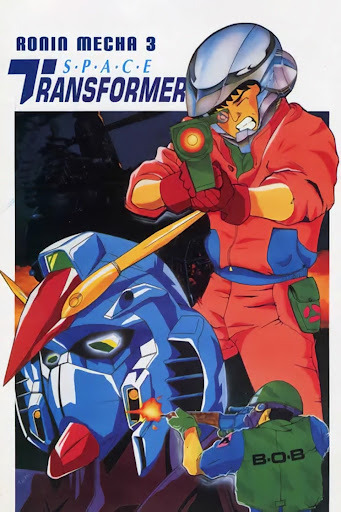
Mighty Lady Sparkle: I admire the passion for tokusatsu but I don't admire the ecchi. It's the kind of movie where you start the movie proposing drinking games over its quirks but 20 minutes in you feel uncomfortable. -2/10

Boneworks: It took a bit for it to click for me, but Stress Level Zero made a really impressive standard for VR gunplay and exploration. That being said, some of the physics takes a bit to get used to and if you don't have good VR legs, this game would be borderline unplayable. The physics puzzles and level design aren't quite up to the valve standard they are trying to live up to, the former being groan worthy at times, but the gun handling is fun enough that I was interested in playing some of the alternate game modes. The confused and underwhelming ending left it on an odd note, but I had a blast/ 7.5/10
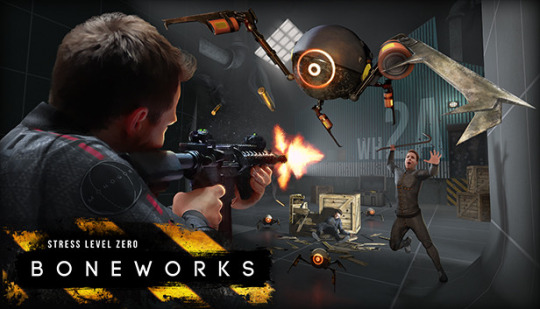
Netflix One Piece: Sometimes the performances just don't work and the dialogue doesn't quite hit the mark. However it made me understand the appeal of One Piece and I gotta give props to the costuming, makeup and the few actors that understood the assignment. 7.5/10

The Amazing Digital Circuis Pilot: There is a distinction between marketable and appealing. Content can be made with the intent of being white noise. Nice rendering I guess. These are ideas that can coexist. 2/10

Bakuryuu Sentai Abaranger 20th: The Unforgivable Abare: I was initially afraid that this would be 'abaranger vs the woke mob' I was pleasantly surprised by humor and some out of left field GL. Can't complain 6/10

X-Files Revival: I'm not gonna sugarcoat it. While a few of the comedic episodes were absolute gold, This was pretty sad. Its attempts to stay topical somehow make it more dated than the 90s seasons did. Unfortunately trying to be hip left me with a toothless 16 episodes made mostly of mythology episodes that are clearly supposed to go a whole lotta nowhere. 4/10

Gundam Build Metaverse: Never before has a 10th anniversary season made me feel so old and hopeless. The first episode left me hopeful when it delivered a premise I could see blossoming into a good 15-ish episode show with the occasional cameo and a laid-back Hawaiian attitude to my favorite hobby. The OP and ED promised a good balance of modeling, character cameos, and original drama. Then the last two episodes dropped at once after a two-week gap. That was it. It introduced its antagonist as quickly as she was resolved. Most cameos were still images if they appeared. No one is the right age. The new toys are dispatched so quickly it fails as a toy commercial. This had to have gone through development troubles because of the botched 'metaverse' spawned by the Japanese grants they were handing out...right? I huffed the copium and just got a confusing meh. 5/10

DOA Dead or Alive: Finally, a fighting game movie adaptation that understands the assignment! It's dumb! It's campy! It's exploitative and oggling but in a way that respects its subjects more than most 2000's movies in this genre. It almost loops around to being oddly empowering, an opinion seconded by my girlfriends hooting and hollering at the movie. While one performance was funny bad, any martial arts movie with a ladder fight is great in my book. 8/10
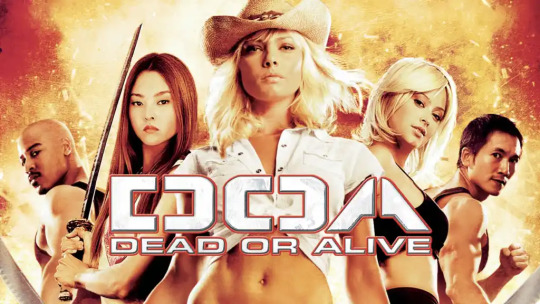
The Last Witch Hunter: Rarely does a vanity projects with someones D&D characters end up this fun. It ranks highly for me in the subgenre of modern-day supernatural hunter movies in an urban setting. Rock solid movie. 7.5/10
Analog Horror Grab Bag: What if a VHS was spoooooooky. Look buddy, mashing MarbleHornets and Exploding Varmits together gets less novel the longer you watch 4/10
Haunting in Venice: I'm not familiar with the original story, but this was a fun and spooky watch. 7/10

Godzilla vs Megalon (2023): I enjoyed the moments of Shin Godzilla cinematography, but mixed with showa-era goofy moves and shonen combat, this short didn't work for me. The chunky soup didn't benefit from an art style that created my least favorite Godzilla design. 5/10

Fest Godzilla 4: Operation Jet Jaguar: RETURN OF DA KING BABYEEEEEEEEEEEEEEE SHOWA IS BACK IN A BIG WAY 7/10

Pistol Whip: Maybe it was the triggers on my controllers but the timing just felt weirdly off. Trying to deliberately juke the timing killed the rhythm game magic and made me feel more like I was waiting for permission to get the bad guys. The John Wick fantasy this is clearly built for wasn't lost on me though, but without that immersion, I just felt bad. Totally subjectively a 3.5/10

Ultraman Netflix Final Season: I don't really get the appeal of public opinion narratives the way anime seems to make them. Similarly, I don't like when noir stories depend on all of the protagonist's friends requiring zero evidence to turn on them at the drop of a hat. Especially when neither party really attempts to talk it out. Its bad writing and a dub with all of the industries bad habits held up by A really hot alien and a funny magical girl transformation that one time. 4/10
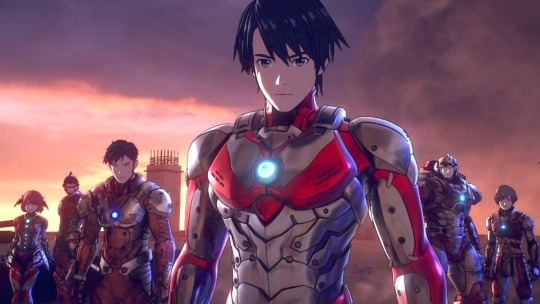
Gundam Trilogy Rewatch: Watched this with two friends who were seeing them for the first time. God these things hold up, especially the 3rd one. Incredible stuff. I and II are a 7/10 for me for good content with weird pacing and III is a 9/10 for great writing and drama. Reanimated sections weren't anything to scoff at either

Skyrim 2nd playthrough: I'll say a playthrough where I know what I'm doing and isn't as sidetracked was better at letting me enjoy the setpieces, I think that without the interstitial wanderlust from the feeling of adventuring a new land, something didn't hit the same. However bringing Sarana(SDA), Lydia(IFD) and a few other talking followers added a certain spice to it. An observation I missed the first time was how hard it pushes you interact with some of the factions in a way I think kinda cheapens their organic introductions.
Armored Trooper Votoms: I reductively pitched this show to someone as the midpoint between Gundam and 40K. There's a lot to love with this series: Gorgeous visuals, concise episodes, and the confidence to change its setting periodically to fun locales like Arakis or Vietnam. Chiricho is a unique protagonist who pulls off the Sigma Male archetype with depth and soul. I was pretty enamored with this from an aesthetic standpoint, but I'm not blind to its flaws. The society is a weak antagonist once they are revealed and the pacing drags as it repeats itself to buy time. While ATs are iconic, they aren't always used with the variety they deserve. While maybe only half the series lives up to this score: 8/10

Knights of the Zodiac 2023: I think this might actually be worst live action anime adaptation to date. Never before have I seen any less interest in adapting the source material than this. I can usually find something to like in a bad movie, but for this I have nothing. Maybe I felt something when we all laughed at the Jump Force cutscenes they used as fight scenes. There's just nothing here. 0/10
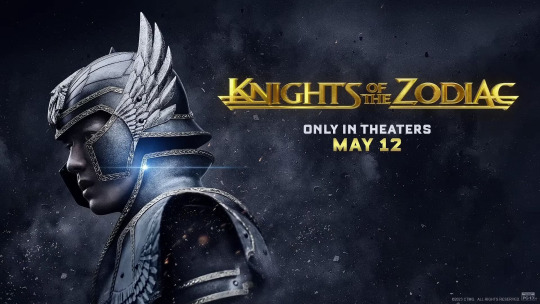
Oblivion Override Demo: Ever play Dead Cells? it sure is that with vector graphics. My weakness for this type of robot design puts in most of the work here. movement feels a bit off. 4/10
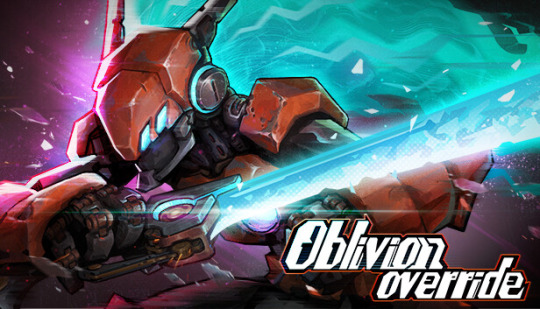
Half Life 2: VR Mod
-As a way to replay half Life 2: Yep, this is still one of the most important games ever. However, I think that the vehicle sections go on a bit too long and subsequent entries did a lot to improve the visual sameness of a lot of the game 9/10
-As a VR game: Gun handling is excellent. Accessibility options like laser sights for all weapons were fantastic, and they let me help smooth out my own learning curve with the weapons. I will say that weapon selection and two handed aiming was a little cumbersome at times, but weapon reloading was the perfect amount of cumbersome to be satisfying. Even though the game itself didn't get rebalanced to accommodate for VR, it all meshed for a really fun and challenging experience. However vehicle controls were kinda weird and not that great standing. 8/10
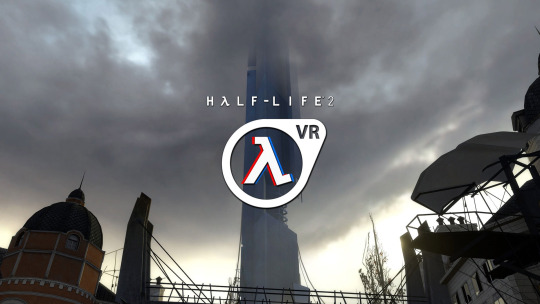
Votoms: The Last Red Shoulder: I've come to the conclusion that the real enemy of Votoms wasn't Wiseman, it was the 24 minute episode format. more breathing room meant better pacing and time to really drink in the kino.7.5/10

Cade: The Tortured Crossing: In an incredible stroke of luck I was able to see a Niel Breen film in theaters and I will not lie: it was amazing. The audience was a riot and I nearly passed out from laughter a few times. The editing was surreal and I could see how this was probably stretched from an hour and a half to two hours in the edit. I will not regret giving it an -10/10
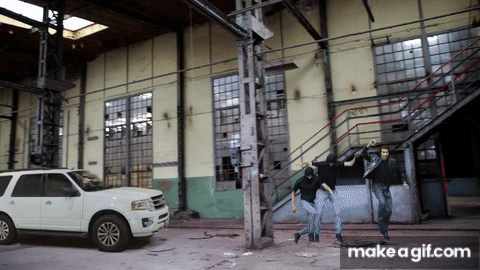
Kengan Ashura S2 (???): The real villain is Netflix's release structure. This is one season of anime I saw at a convention like 4 years ago. Its pretty alright. It's competent 6/10

The Mummy 2017: This movie has been a punching bag, both because of the presumptuous launch of the 'dark universe' and also that one trailer that was posted with unfinished sound. Unfortunately, the movie itself is pretty alright and I would like to see more. Plus one point for American Werewolf in London but I take that point away again for another mischaracterization of Dr.Jekyl. 6/10

Votoms Big Battle: Neat stuff. real standout is the fun character design and animation. I also liked the touch of the filter over the villains voice. It kinda hints at how much of a machine he is at that point. 7.5/10

Attack on Titan Final Season part 3: I don't think the ending was bad for the reasons a lot of people say, but I can tell it beefs it in the final chapter. Everything up to that is incredible, Especially the bit with the baseball. Sadly I think the sour note with Mikasa and the tree was an interesting choice that really didn't work out and spoiled it for me a bit. 7.5/10

Attack on titan as a whole... It took a decade. The times weren't always great, but they sure were had. It is politically dense enough that everyone has a half-baked opinion. When it hits, it hits HARD. I think an 8/10. I don't think I was ever bored for a minute.
Godzilla Minus One: I often find myself drawn to the mood of the original Godzilla. Sometimes I wonder if the constraints of its time allows the mind to fill in the gaps. This movie provides us no quarter to do so. It replicates this horror without leaving any to chance. I think this because more than any other in this series, the stakes feel truely desperate and personal. This felt like watching one of those truelly classic films for the first time (oddly enough I was reminded of Jaws...) I'm not sure if it surpasses Shin or the 1954 original yet, but I give this movie a 10/10 with no hesitation.
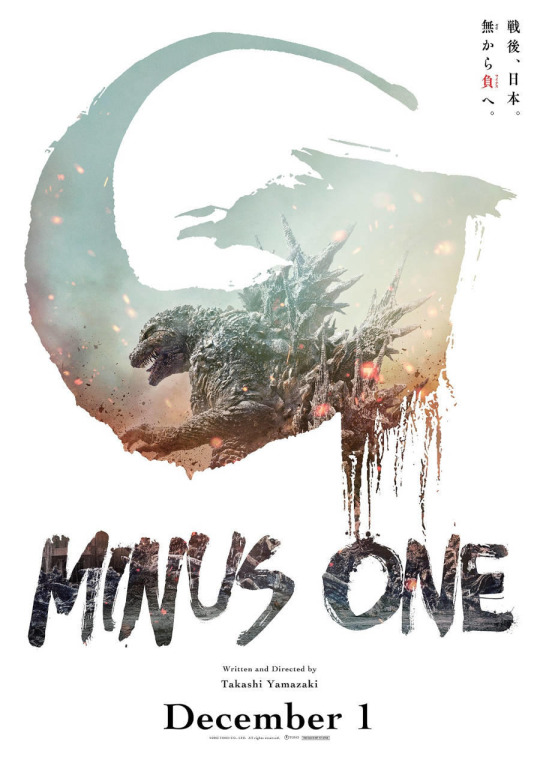
Knights of Sidonia (Manga): I'll be honest, the first few chapters did a lot to turn me away the first time I tried this, but this series is certainly not the collection of anime tropes I expected. The art is amazing once Tsutomu Nihei hits his stride. The intricate detailing and compositions have to be seen to be believed. I will applaud it for leaving a lot of room to breathe. Most wouldn't resist overexplaining the aliens. The interpersonal story is pretty gutsy, especially considering the resolution to the romantic angle and some surprisingly not weird treatment of characters with fluid genders. However, I think a lot of characters fell through the cracks in favor of the harem angle that was starting to develop (typified by the robot tsundere who felt really unnecessary). 7.5/10

Furi Demake: I get that this is just a little fun proof of concept, ut the Game Bakers kinda under-prooved a few important parts. Namely, the music is generic and the hit hit detection for parrying was wonky. EX: a ground slam you are supposed to parry from right below confused the directional inputs since it can't figure out which way you are facing. 6/10 but I would play a full version of this concept.
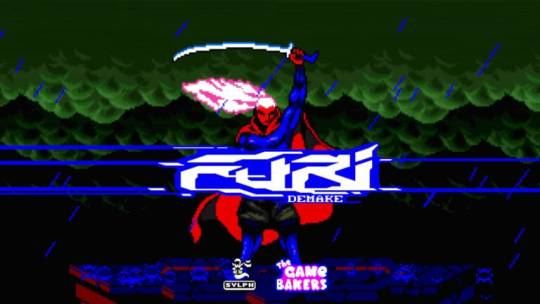
Jetborne Racing and Star Trek Bridge Crew: Early VR games with a predominant online component, slow gameplay and wonky controls? in 2023? Yeah Jetborne is unplayable since there's no one online and Bridge Crew is just unintuitive to play. Instead of space mysteries the gameplay consists of figuring out how to undo your space-parking brake 2/10
8 notes
·
View notes
Note
Hiya! I was thinking about the remastered animation Cel style evil Conan post you put up recently, and I just wanted to say how amazing and impressive it is! I love love love the look of old animation and you really nailed it. I’ve been trying for ages to mimic that look myself and haven’t been able to crack it, so if you ever wanted to talk about your process on this piece, I’d be all ears! Wonderful work, again!
Waaah hi liv!! Thank you, I'm so glad you like it, and that it comes across so convincingly!! One of my favorite things is to make digital art that can have a second life as a different medium, and I wish I had an easy answer for you as to how I go about doing that, but the truth is that it's mostly the result of a lot of trial and error. And a metric ton of references.
Here's a quick process video of my last piece to try to show off what all my layers are like, but I know it's mostly useless without an explanation!! I can't explain it all because I was kinda winging this one for funsies but I can give you general tips for this particular look.
Clip and words below the break!
As a disclaimer I didn't really go into this one intending for it to come out looking the way it did. So it's more of a hybrid look between my usual "clean" digital rendering and a fake screenshot.
[1] Reference, role models, and inspiration - I'm not kidding when I say I used to tote around an entire, dedicated folder filled with printed reference. These days that usually takes the form of about a million browser tabs ( ̄▽ ̄) I stare at early Detco and the first six movies a LOT. And Cowboy Bebop. And Akira. And and [insert your choice of 80s-90s anime film]. Depending on the exact look you're trying to replicate, you can always look to a more era-appropriate movie.
I love pulling inspo from films in particular (both animated and live action) because cinema is a whole other art that employs all kinds of techniques for our usual considerations (like lighting and framing), and looking to them can inspire some pretty poignant imagery, especially when you're trying to create something that's meant to mimic a single-frame capture of exactly that. I don't keep up with movies or anything, but I do have my favorites, and it didn't really occur to me to look to them until some of my favorite artists revealed that they do the same with theirs.
For this particular piece, I also had to establish some consistency with the other piece that bookends the scene, so I actually referenced my own art, too.
[2] BIG canvas! I usually work at two or three times the size I expect to export. Following standard aspect ratios for animated productions can help sell the look. Letterboxes have their own ratio, too, if you choose a widescreen canvas; and subtitle fonts are usually standardized to certain font families and colors since their primary purpose is to help make the media accessible. All this is usually a quick google search away, OR… if you're like me, and you still watch physical media… you can just yoink most of this from a real DVD.
[3] Thin lines!! I still can't quite nail the right line weight for these-- I definitely went too thick here-- but they tend to be very fine. And imperfections are good! Nobody has a perfectly steady hand, especially with traditional cels.
[4] Less is usually more when trying to sell a screenshot look… it's easy to over-ink and over-render and-- in my opinion-- restraint is necessary to sell it. This is the hardest thing to explain… it's design vs. rote emulation, I think. But that said, digital aids (next point) do a lot of the heavy lifting in these - as far as the art is concerned, a little will go a long way! These were some of my easiest lines and shading. So on that note…
[5] …Blending modes, masks, and filters are all your friends o___o I get a lot of mileage out of the default tools already available to me in the art software. There's plenty out there that's available for free, too! I recommend you find a fake anime screenshot tutorial, follow it once, and just go nuts when you get to the part where you can play with these settings. The make-or-break for a convincing screenshot-- in my opinion-- is texture and bloom, and all these digital tools will help you achieve that.
I hope this helps!! Hopefully the video can help you see a bit more of the process since I can only really offer tips. It shows everything at full size so you can see the details, so go nuts!
Thank you for the ask! Beaming plenty of good luck that you can find the look you want!!
ALSO I REALLY HOPE THIS IS THE PIECE YOU MEANT I'M LITERALLY ABOUT TO QUEUE THIS UP AND JUST REALIZED THE ONE THAT CAME BEFORE THIS IS MORE REMASTERED CEL ANIMATION LOOK SKSKSKSK
the same tips apply though so i hope they still help all the same :3c
10 notes
·
View notes
Text
A couple of years ago I attended to a course on online communication in my university studies. One of the assignments on the course was to write a blog post about a subject we chose. When I was on that course, I didn't have this blog, so I published the blog post on my Twitter and LinkedIn. These platforms do have limitations on how long the posts can be, so I had to edit my blog post a lot to get it published. But now that I have this blog, I can translate it into English and publish it as I wrote it. So here it is:
Library services for LGBTQI people
Pride month is still ahead of us this year, but LGBTQI folks exist outside pride month, too. That's why it's good to consider how libraries could be more open and comfortable for queer people. In this blog post I introduce a couple of ideas on what libraries could do to enforce the equal treatment of sexual and gender minorities.
Queer people read books like cis straight people do. That's why it's important to have current and fresh literature where queer people can see themselves. Queer fiction is still unfortunately rare, but there are recommendation lists and book reviewers who specialise in queer fiction. Libraries can use these lists and reviewers to find new material for their collections.
Of course, libraries need also nonfiction, which acts as a segue to my next point: information services. There have been studies conducted on especially trans people's information needs and information seeking in the field of information studies, because they have especially unique information needs in different stages in their lives. Especially Aira Pohjanen found in her study Transsukupuolisten identeetin rakentamiseen liittyvä informaatiokäyttäytyminen (2013) (link and study are both in Finnish, unfortunately) that transgender people need information on a huge variety of subjects. These include:
identity, words, phenomena and concepts,
other trans people's experiences,
gender reassignment surgeries and hormone treatments and how they affect the body,
how to get a referral for these treatments,
how much these treatments will cost and how long they will last,
changing one's name
and risks involved with the surgeries.
According to Pohjanen, the most important information source is peer support and other trans people, but libraries should also know where this information can be found and offer this information for various reasons. For example, there might be trans people out there who don't have a peer support network yet or if a cisgender person is just interested about the subject and wants to educate themselves. Brandon Lyttan and Bibika Laloo agree in their study Equitable Access to Information in Libraries: A Predicament for Transgender People (2020): they say that libraries can ease trans people's information seeking by making it easier to access information about trans issues and offering physical and digital material on the subject.
Libraries can do other things too: they can offer a safe space where to meet other people. A majority of queer-oriented spaces are bars or nightclubs, which excludes a lot of people, for example minors, former alcoholics, people suffering from epilepsy and those queer people who just don't like noisy clubs. It is especially crucial to offer places for queer minors so they can be themselves without fearing discrimination and where they can get peer support and the sense of community.
Library staff also has to be ready to meet queer patrons. They have to be aware of the basic terms (transgender vs cisgender, asexual, nonbinary etc) and a patron should not be cross-examined on why they want information about transition processes. Librarians should be aware of reliable information sources about queer issues and challenges their own internalised thought models. It would be great if library staff could get training against discrimination and anti-discrimination policies were used in general.
Equality can be advanced in the patron databases of the libraries also. For example, marking down the patrons' gender feels, to me personally, unnecessary as a library patron and as library staff. But if there is indeed some insurmountable reason to mark down patrons' genders, the options "other" and "prefer not to say" should also be offered. And of course, the patrons should be given free access to change their gender marker later by themselves, either from the library's website or by email. Changing your name should be just as easy.
2 notes
·
View notes
Text
Class Groups: Are They the Future of Collaborative Learning?
The traditional classroom setting, with rows of students facing a teacher at the front, has dominated education for centuries. However, the rise of technology and the evolving needs of the 21st century workforce are pushing the boundaries of learning. Enter Class Groups, a concept that reimagines the classroom by leveraging the power of online learning solutions and fostering collaborative learning. But are Class Groups truly the future of education? Let’s delve into the potential benefits and challenges associated with this innovative approach to learning.

Traditional Classrooms vs. Class Groups: A Shift in Focus
Traditional classrooms emphasize a teacher-centered approach, where the instructor delivers knowledge and students passively absorb it. This model, while effective for foundational learning, can struggle to equip students with the critical thinking, collaboration, and communication skills crucial for success in the modern world.
Class Groups, on the other hand, represent a shift towards modern learning. They utilize online learning platforms to deliver core content through engaging video lectures, interactive exercises, and gamified learning experiences. This frees up valuable classroom time (whether physical or virtual) for collaborative activities, discussions, and peer-to-peer learning. Think of it as a two-pronged approach: independent learning facilitated by online platforms and collaborative learning fostered within the Class Group environment.
Benefits of Class Groups for 21st Century Learning
Here’s how Class Groups could revolutionize education and prepare students for the future:
1. Enhanced Collaboration and Communication Skills:
Explain Learning, a website dedicated to promoting effective learning strategies, emphasizes the power of collaboration. In a Class Group setting, students work together on projects, solve problems, and engage in discussions, honing their communication skills and learning to navigate diverse perspectives.
2. Deeper Understanding Through Shared Learning:
The act of explaining a concept to another person strengthens your own understanding. Class Groups create opportunities for students to teach and learn from each other. This reciprocal learning fosters a deeper grasp of the material and encourages critical thinking.
3. Development of Problem-Solving Skills:
Working collaboratively on real-world projects or simulated scenarios within a Class Group allows students to develop creative solutions to complex problems. This prepares them for the collaborative nature of work in the 21st century.
4. Increased Flexibility and Personalized Learning:
Online learning platforms provide students with the flexibility to learn at their own pace, revisit content as needed, and focus on areas requiring additional attention. This personalized learning approach caters to individual learning styles and needs.
5. Global Community and Cultural Exchange:
Online Class Groups can connect students from different countries and backgrounds. This fosters cultural exchange, broadens perspectives, and prepares students to thrive in an increasingly interconnected world.
Challenges of Implementing Class Groups
While Class Groups offer exciting possibilities, some challenges need consideration:
1. Digital Divide and Technology Access:
Not all students have equal access to reliable internet and technological devices. This digital divide could create an uneven playing field within a Class Group. Addressing this disparity is crucial for equitable access to this learning format.
2. Effective Group Management:
Facilitating successful Class Groups requires skilled educators who can create engaging learning activities, manage online discussions, and ensure all members actively participate.
3. Fostering a Supportive Online Environment:
Maintaining a respectful and inclusive online environment is critical. Strategies to combat cyberbullying and promote online etiquette within Class Groups need to be established.
The Future of Collaborative Learning: A Hybrid Approach
The idea of Class Groups replacing traditional classrooms entirely might not be the most realistic scenario. However, a hybrid approach that combines the strengths of both could be the ideal solution. Students could utilize online platforms for independent learning and then come together in Class Groups, either physically or virtually, to collaborate, discuss, and apply their knowledge.
Conclusion:
Class Groups offer a promising path towards a more engaging and effective learning experience. By fostering collaboration, personalized learning, and critical thinking skills, they could be a valuable tool in preparing students for the demands of the 21st century. However, ensuring equitable access to technology and equipping educators with the skills to manage online learning environments are crucial considerations.
Ultimately, the future of learning may lie in a well-balanced approach that leverages the strengths of both online learning platforms and collaborative learning experiences within Class Groups. This hybrid model has the potential to empower students to become active participants in their learning journey, fostering a love of knowledge and preparing them to thrive in an ever-evolving world.
Content Source Class Groups: Are They the Future of Collaborative Learning
#classgroups#classgroup#explainlearning#explain learning#e-learning#e learning#education#students#onlinelearningsolutions#modernlearning
2 notes
·
View notes
Text
[Review] Starlink: Battle for Atlas (NS)

An Ubisoft open world... in space! Also Star Fox is there!
Lylat Wars is one of my childhood favs, so I'll play anything if they put Star Fox in it. It just so happens that the Switch version of this open world toys-to-life game included a bunch of Star Fox side content as an extra, so here we are. Now it's taken me a few years to recover from Star Fox Zero, but the characters are handled very well here, enough for me to open my heart to them again.
At the very tail end of the Skylanders/Lego Dimensions/Disney Infinity craze, when shops were cutting back on the shelf space they had reserved for plastic figure after plastic figure of dubious usefulness, Ubisoft decided to launch their own entry in this space... for some reason. This being a customisable space ship game, their implementation involves large ship models that attach to a controller mount. The ships then have slots where different weapons and pilots can be attached, and each component can be swapped on the fly depending on the situation. In practice this is clunky and cumbersome, but luckily the physical models are entirely optional. Instead you can buy the components digitally and switch them around in a menu, and I was pleased to score a version off the eShop that included all wave 1 components at a good discount.
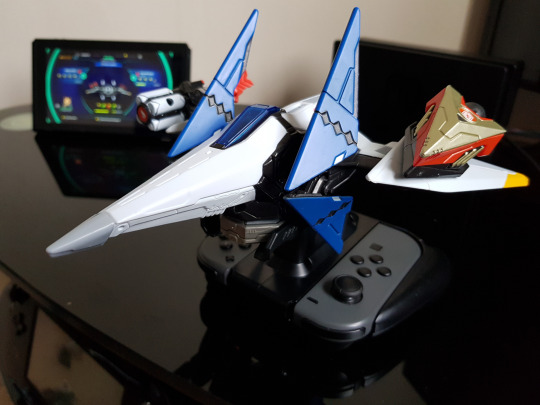
Locking weapons that have situational usefulness, or suit your playstyle, behind a purchase feels a bit scummy; especially when I stuck to just four of the 27 available (double gatlings and double missile volleys). Ships are helpful to have a handful of, as they essentially act as extra lives. The pilots are more understandable as optional DLC, but you do need ones from certain factions to unlock global upgrades and I think questlines. So there's a big FOMO component that feels exploitative, but it does make extra purchases feel helpful in-game. Beyond the "digital deluxe" set I also got the Star Fox team pack that adds Falco, Slippy, and Peppy to the base game's Fox (plus a new questline), and the monkey-like pilot Startail because she looked cool... sadly she had an annoying voice (she's not alone), but I still used her and Falco for most of the game thanks to their abilities.
But how does Starlink actually play? Funnily enough it feels a lot like a follow-up to Star Fox 2, Argonaut's SNES sequel that Nintendo cancelled then finally released 22 years later. You have a big star system map with various planets, where the baddies spread to over time. Strategy elements are present but light, where most of the progress comes from the player's direct action. Most of your time is spent ranging over planet surfaces, doing tasks and activities that get you resources and push back the army of robots. These build towards climactic battles with space battleships which you fly inside to destroy (again, very like Star Fox 2). Then follows much rinsing and repeating: this is an open world game, after all.
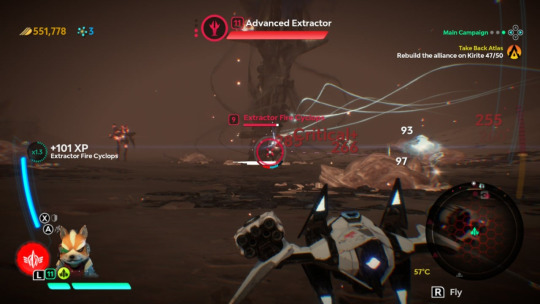
On the surfaces your ship becomes a sort of hover-speeder. I had more fun with the planet-bound sections than the space stuff, mainly because there's a much greater density of things to do there, and movement and combat is also more manageable when it's constrained by gravity and dimensions. Special mention must be made of how almost seamless it is to transition between ground and space by simply flying up; especially impressive on the Switch which handled the whole thing remarkably well, only chugging when there was an abundance of enemies on screen. The other platforms probably have better overall performance, frame rate, etc., but Star Fox is the winning draw (the other platforms don't have any equivalent extra content of this sort either).
Anyway, in the first few hours you'll get an idea of the loop: zipping around, building up outposts to get map information and resources, and fighting enemies to capture points of interest. All of this builds up a planetwide meter that represents your control vs. the evil alien robot whatevers. I settled into this groove and found it quite fun, never getting too bored of it, although this may vary with your tolerance for repetition. A scant few sidequests can give you some different things to do (and let you hear more voice lines from the actors other than the very oft-repeated expositionary chatter) but a lot of the time it's the ol' open world grind.
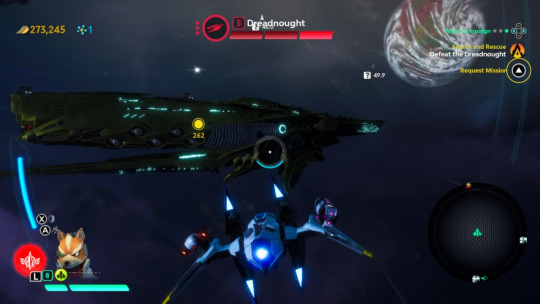
The plot is your standard YA sci-fi stuff, not much to write home about. The main team, a set of largely unlikable human schmoes, have uplifted themselves with alien technology to help an alien buddy, and in medias res arrive in the Atlas system. There's some uncomfortably heavy colonial vibes here, as the planets are all some variety of wilderness teeming with settlers, explorers, prospectors, and bandits, and your role as outsiders is uniting these folk under your banner—ostensibly to fight some monster guy and his robot army—and make big decisions about how the system is run before presumably jetting off again after the credits roll. Hmm.
The personal stories of the characters, especially the alien friends you make in Atlas, were the highlight for me, although I feel like they aren't always introduced effectively. As both a game where characters can be spawned in any time from the start and one with some open-ended elements, developments can feel abrupt and the pacing uneven. The Star Fox team and their story is actually integrated very well, although Wolf as the antagonist of this sidestory was, I feel, acting quite out of character from what I would expect. I see him as an amoral mercenary, while here he's set up as a would-be galactic conqueror. Ah well.
Otherwise the Star Fox stuff is excellent: you get a spiffy Starlink version of the Arwing, there's some nice covers of classic music tracks, and the team chatter is top-notch (again, when it's not just open world exposition). The voice actors have mostly carried over either from their original Lylat Wars appearances in a few cases, or the recasts that have stuck since the 3DS remake, and they nail it, especially because they're not just doing weird alternate takes on a reheated script (Zero still hurts my soul so much...). The team are integrated into prerendered cutscenes and there's unique events and missions, plus having them as an addition only makes the overall roster stronger. It's not a full new Star Fox game, but it's pretty much the next best thing. My only complaint is having the characters still trapped in this Lylat Wars/Zero-era setting, continuing the writing-out of Krystal, Sauria, Panther, the Aparoids, everything that Command introduced, etc... but I guess that wasn't really Ubisoft's decision. It's better than nothing, I suppose.
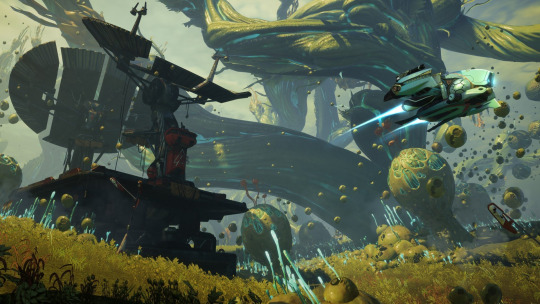
Anyway, Starlink was a pretty good time. As long as you resign yourself to spending more than the normal cost of a game to get a full experience. And you don't think too hard about the themes of the setting. And you don't mind a bit of open world repetition, or the uneven weapon balance, or that obnoxious influencer kid who's on the team for some reason. But let's not focus on the negative; there's a lot to like here. It's a cool sci-fi space game that integrates planet surfaces well, the core gameplay loop is solid and satisfying, and it has a very good crossover with my favourite rail shooter series. I wouldn't get my hopes up for a sequel though, as the retail toys underperformed and five years later the developer is now making Watch Dogs and Far Cry games (as if Ubisoft didn't have enough of those) or assisting on every other Ubisoft release.
3 notes
·
View notes
Text

Sneak peek of things to come, and an excuse to talk about digital art vs ‘traditional’ art.
There is a pervasive idea among non-artists and traditional-only artists that digital art requires less skill than traditional art.
This is false. Digital art is different from traditional art, in the same way that pencil drawing differs from oil painting. What makes someone a technically skilled artist differs from one medium to the next. I am a very competent pencil artist and watercolor painter as well as digital artist in a variety of styles. I have dabbled in physical sculpture and in 3D modeling.
I find that physical traditional media is almost always more intuitive, if not outright easier. The tactile feedback gives you so much control that is lost when trying to manipulate pixels. Blending, shading, and texturing are all very straightforward on paper or canvas. For sculpture, the primary advantage of digital is the ability to endlessly replicate exact copies of the model, but it is so much easier to physically sculpt clay than it is to wrangle a 3D model. Just the ease of rotating a physical object is a major advantage.
But across all media, what makes me a good artist doesn’t change. My eye for form, color, and composition isn’t different just because I work primarily in digital. My understanding of line, shading, and textures remains the same. How I execute my ideas and the effects I can achieve vary, which would be true for any two mediums.
I recently saw someone argue fervently on a video of a an oil painter demoing a digital art program, that digital art “isn’t art” because you can undo mistakes. And while it is true that you can undo mistakes, that doesn’t mean you have the skill to fix the mistake. The ability to undo a mistake isn’t going to blend your colors for you. You might not even have the eye to know when something needs fixing.
And if you think blending colors and shading in digital art is easy, think again. It’s incredibly nuanced and takes a lot of experience, and all the tutorials in the world can’t teach you how to feel the brushes when the tactile feedback for every brush is exactly the same. Imagine watercolors giving you the exact same sensation as a pencil or a gel pen, but they all behave completely differently. Now try to make that work.
There are amazing things you can do in digital art software that you can’t in traditional, in the same way that you can do things with oils that you can’t do with a pencil and vice versa. At the end of the day, digital art is a medium and a tool, and it’s no better or worse than any other. Now if you’re trying to pass off AI generated images as art, that’s another matter.
#my art#digital art vs traditional art#also there’s a whole socioeconomic side to this i won’t even get into#but suffice to say that in modern times#the barrier to entry for digital art is so much lower vs say…oil painting
11 notes
·
View notes
Text
Why is it "easier" to capture paranormal evidence using analog tools?
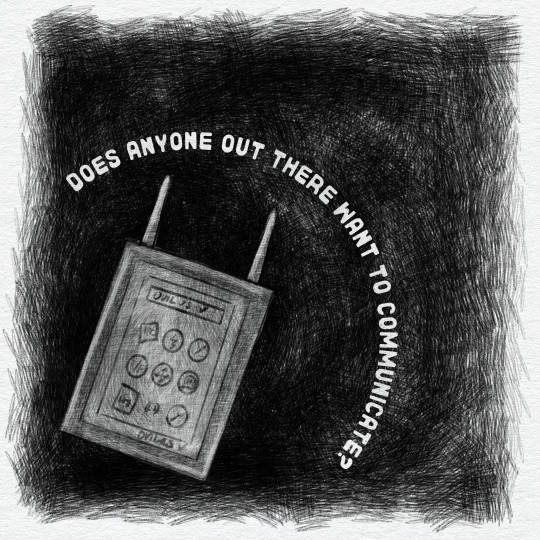
I've been writing a lot about how so many ghost hunting tools feel very analog. So many of them seem like relics from the 1980s and 1990s, like the spirit box, which is simply a modified radio.
I think that innately, we trust these more physical, analog ways of cataloging and interacting with the paranormal. Yes, it's easier to fake a digital photograph of strange phenomena or use a Spirit Box app on your phone. But for some reason, there's a sense that it's easier for the paranormal to interact with these more physical, analog, retro forms of communication and documentation.
I struggle to put my finger on exactly what this is. After all, why do we think that a ghost, spirit, or other paranormal phenomena would have a harder time interacting with a digital device like a smartphone or a laptop, than it would with a older electronic device like a radio or a instant camera?
Shouldn't it be easier to adjust a line of code than to move something in the physical world? After all, if an entity is incorporeal, and so much of our modern technology is as well, then why wouldn't they be able to communicate with us through our smartphones, tablets, and computers just as easily—or more easily—than they might through analog media?
Thinking about this using the Ovilus
You could argue that an entity couldn't interact with modern technology in the same way that it could, say, a film camera, because it's more complex. Maybe my example of an entity interacting with digital devices on a code level is absurd. That argument is fair, but if that's the case, why would a ghost more easily interact with popular digital paranormal investigation gear, like an Ovilus?
While the Ovilus is a (sort of) recent invention, dating back to the late 2000s or so , it has the vibe of an old piece of tech. It's a purpose-built device that takes environmental readings and translates them into words (and other output, like an image ).
My understanding is that this is how the typical Ovilus works (though I assume there's some amount of variation between models): it contains a word bank of ~2,000 words. Each of those words seems to be correlated to a different EMF reading (according to this write-up, at least.) The device monitors EMF readings, then when there's a fluctuation in the amount of EMF in the area, the Ovilus outputs the word that is associated with that reading.
The Ovilus is a very cool and inventive device. I've only used one in person once, but I'd love to get the chance to again. However, there are a number of criticisms you could level at the Ovilus, and many of them are very fair. (I tend to be of the opinion that treating paranormal investigation as scientific experiments—both from an earnest POV and a debunking POV—is missing the point. But that's something for another day.)
My big question here, though, related to analog vs. digital ghost hunting question, is: How does the entity you're communicating with know what words are in the word bank and what EMF readings they're associated with?
To me, this puts the Ovilus in the same camp as something like a modern smartphone: it's a digital device that can interact with and gather data from the world around it, but it operates in a way that's is opaque to (most) humans and entities alike.
Anyone can understand the basic mechanics behind a film camera or a cassette tape—they're straightforward machines, and the operator can open it up and see the physical thing that the data is stored on (the film or magnetic tape, respectively.) So it feels plausible that it'd be straightforward for an entity to interact with. But digital ghost hunting devices that turn environmental readings into words via code and databases? Less so.
Synchronicity as a tool
I'm not saying that the Ovilus doesn't "work," I'm just saying that this piece of physical gear is likely best viewed from a synchronistic standpoint. My credulity is strained by the idea that an entity could understand what words are affiliated with each EMF reading and manipulate the EMF based on that. Like any tool, something like the Ovilus should be woven into the larger narrative of an investigation rather than have its results taken on their own.
What do I mean by that? Basically, if an investigator is using an Ovilus and gets the word "demon" and then thinks that means that they're communicating with a demon, with no other evidence to support that, then I think they're jumping to conclusions.
However, if an investigator is, say, using an Ovilus while someone else is doing the Estes Method, and both the Ovilus and the Estes session start to output the same words or variations on a theme, then that's something to pay attention to and look into.
Basically, any investigation device is probably at its best when its data is viewed as part of a larger narrative of an investigation, rather than when taken at face value.
But if a large contingency of the ghost hunting world is willing to consider the Ovilus as a potentially effective ghost hunting tool, why does it seem like there's so much more skepticism when it comes to considering the possibility that entities could communicate using modern technology? [^1]
Okay, I know I just wrote a whole blog post about that yesterday, but I mean setting aside things that are being manipulated by algorithms and "machine learning." So, yes, there are good reasons not to trust the technology that we use these days. (In addition to the ease of fakery—accidental or intentional—we now all know that our phones spy on us and track our every move.)
But there's something else afoot here. While plenty of folks (including me) do put stock in the synchronicities that show up on our computers and smartphones, I just don't think as many people people generally believe that ghosts are able to interact with those devices.
Like I said, most people don't understand how smartphones and computers work, or at least not as well as we grok radios and instant cameras. But again, why do we seem to think that incorporeal forms would have an easier time interacting with something physical then they would have interacting with something digital?
Or here's a question: are paranormal phenomena interacting with us on our digital devices, but we can't tell, since anything could be written off as a glitch or algorithmic foible? I wouldn't be shocked if that were the case. After all, isn't the digital world—cyberspace, or whatever you want to call it—potentially closer to what the spirit world might be like? Isn't cyberspace place where time and space work differently, and complex, "invisible" forces carry great sway—in a way that isn't so different from some imaginations of other realms of reality?
[^1] Not all investigators feel this way, of course! I'm always a fan of Liminal Earth's approach to the paranormal, which is to have an open mind and try to connect to weirdness in creative ways. They've even shared a way to make custom a digital spirit box using mp3s.
#cryptidcore#cryptidacademia#ghost hunting#ghosts#paranormalinvestigator#paranormal podcast#digital drawing
5 notes
·
View notes
Note
I had a little look into the KManga thing back when it was announced and no one outside the US could get on the site - my best guess as someone without much knowledge of the industry is that it could be a distribution rights issue? There seems to be a different distributor for the physical WHA volumes in the UK (Diamond Comics UK) vs US (Kodansha USA itself I believe? Was harder to check) (not sure about other ENG areas), and I'd wager that extends to digital distribution, for market reasons. Doesn't make it any less of a pain, but could explain why it's started as US only as they may be negotiating.
Alternatively - just a server capacity thing. Since there's a lot of ways to read manga out there, it's probably a safer bet to limit accessibility initially and see if it's worth running & if there's demand elsewhere, rather than launch with a more expensive set up? I.e. politely requesting they expand access would be a good idea
That makes sense! K Manga also addressed some feedback (mostly on their payment models though) and were taking it into consideration. Thank you for the ask!
4 notes
·
View notes
Text
There isn’t a perfect crafting material and one isn’t strictly “better” than the other: a blog post styled rant on why people need to stop asking which material is the best and why 3D printing pieces for cosplay is not ‘cheating’ or easier than any other method
I have seen waaaaay too many people lately (especially on the clock app) claiming that 3D printing is cheating or somehow easier than the low tech, older methods like foam work and thermoplastic crafting. This absolutely drives me crazy.
I am a fabrication girlie at heart. I am a foam gremlin to the core but started out with Worbla (a delightful classic). I have recently picked up sculpting/mold making/resin casting. I am teaching myself how to 3D model. I have put hundreds of hours into finishing the dozens of 3D printed props and bits & baubles I have for various cosplays. I have worked with air drying clays, apoxie sculpt, paper mache, and chainmail. I work both in the digital and physical spaces for patterning. I have won several major craftsmanship awards with my fabrication skills. With all that as my credentials, let me say that 3D printing is not any easier, faster, or somehow better than all the other things I mentioned.
There is no such thing as a perfect crafting material. Anyone that tells you that is trying to sell you something. Every material and it’s corresponding techniques have pro and cons- the things that it excels at the and the things that it doesn’t work so well for. Wether it is a high-tech and automated process or a low-tech process done mostly by hand, every material can be utilized poorly or expertly. What makes the difference in the quality of the finished product or what wins awards in craftsmanship contests is how the material/technique was executed. A low budget cosplay can beat one that used tools that cost upwards of $1,000. It’s all about HOW the materials and tools were used.
For every 3D printed piece, there are lots of steps. You don’t just press a button and magically have a beautifully finished sword or geometric little Genshin Impact accessory piece. No, not all.
It has to be modeled first, then run through a slicer program to be printed. There’s lot of behind the scenes calibration that has to be done on the printer and adjustments of the model to get it in the optimal position to minimize seams and support material. There’s adjusting settings on the printer, like infill, to balance strength of the finished print vs amount of filament used (and therefore the final weight of the print). After printing, you have to remove support material and clean up the raw print. Next up is the eternal limbo of filling and sanding (god, it takes forever). Depending on your seams, you may be stuck in Bondo hell for a while too. Finally there’s painting, which can range from a quick blast of spray paint but could turn into the exceedingly complicated process I like to do that ends up using about six different paints. Then there’s the clear coat to protect the finished product.
A 3D printed prop does not magically appear from the ether. Much like any other material, there is a long list of steps and so much work put into a single piece. By the nature of how 3D printing works, pieces will come out very exact and crisp with a precision that human hands can’t quite achieve. But that comes at the price of expensive equipment, a steep learning curve for 3D modeling, and countless hours invested into the entire process from beginning to end. Even with purchasing models as I often do, it’s still not easy, cheap, or fast to make 3D printed pieces for cosplay.
Foam can win over 3D printing and sewing can beat out any fabrication build. It’s not a matter of WHAT was used. It’s a matter of HOW WELL it was used. Craftsmanship is not determined necessarily by the material but by the skill of the person using it. 3D printing is just a different set of skills than what is needed for Worbla or EVA foam.
2 notes
·
View notes
Text
Attendance Software or Biometrics: Which Suits Your Business?
Tracking employee attendance accurately is vital for boosting productivity, maintaining compliance, and improving operational efficiency. With advancements in technology, businesses can choose between Attendance Software and biometric systems to manage attendance seamlessly. While biometrics offer secure physical verification, Attendance Software is gaining popularity for its cost-effectiveness, flexibility, and suitability for modern workforces. Let’s explore these options to help you decide the best fit for your organization.
Biometric Systems vs. Attendance Software: Key Differences
Biometric Systems
Definition: Use of fingerprints, facial recognition, or other physical traits to record attendance.
Key Features: High-security, minimal chances of impersonation, ideal for on-premise setups.
Challenges: Expensive installation, maintenance costs, and limited adaptability for remote or hybrid work models.
Attendance Software
Definition: A digital platform accessible via mobile apps or the web to automate attendance tracking.
Key Features:
Real-time attendance tracking.
Seamless integration with HR and payroll systems.
Flexibility to support remote and hybrid workforces.
Challenges: Requires internet connectivity and familiarity with digital tools.
Businesses in India are increasingly adopting online attendance software for its convenience and scalability.
How to Choose the Right Attendance Tracking Solution
Here’s a guide to help you decide:
Company Size: Large enterprises may opt for biometrics, while small to medium businesses find staff attendance software more affordable and scalable.
Budget: For startups or companies seeking economical options, free attendance software solutions like Kredily are a game-changer.
Industry Needs: Security-sensitive industries such as finance or manufacturing may prefer biometrics, whereas flexible industries thrive with attendance software in India.
Remote Work Capability: Attendance software is better suited for remote and hybrid teams.
Integrations: Choose a solution that connects effortlessly with payroll and HR systems.
Why Attendance Software Is a Better Choice
Modern businesses prefer attendance software over biometric systems for several reasons:
Cost-Effectiveness: Eliminates the need for expensive hardware setups.
Flexibility: Supports remote work and hybrid teams with web-based access.
Seamless Integrations: Syncs with HR and payroll software to enhance efficiency.
Ease of Use: Accessible anytime, anywhere, ensuring convenience for all employees.
Kredily: Your Trusted Attendance Solution
Kredily offers a powerful online attendance software tailored for Indian businesses. Here’s why it stands out:
Affordable staff attendance software with seamless biometric integration.
Advanced features for real-time attendance tracking.
Trusted by organizations across India for its reliability and user-friendly interface.
Options for free attendance software, ideal for startups and SMEs.
Conclusion
Choosing between Attendance Software and biometrics depends on your business size, budget, and operational needs. While biometrics may suit specific industries, attendance software in India is versatile and cost-efficient, making it an ideal choice for most businesses.
Take the next step! Explore Kredily’s robust attendance solutions today and transform how you manage employee attendance.
#attendance software#free attendance software#staff attendance software#attendance software in india
0 notes